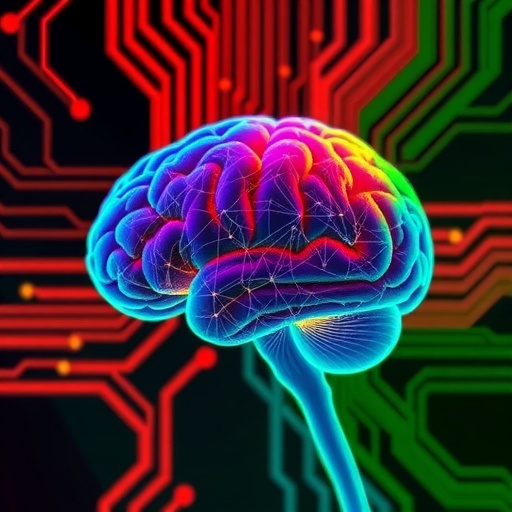In a groundbreaking shift away from traditional animal testing, researchers at the University of Rochester are pioneering an innovative approach to studying brain function and disease. By harnessing the power of microengineered tissue chips embedded with human brain tissue, these scientists are unraveling the complex interactions that govern the brain’s health, particularly focusing on the integrity of the blood-brain barrier, a critical interface protecting the central nervous system from harmful substances. This avant-garde technique holds promise for accelerating discoveries in neurodegenerative conditions and acute brain injuries linked to systemic inflammation.
Leading this frontier is Professor James McGrath of the Department of Biomedical Engineering, whose work centers on the development of translational microphysiological systems. These “tissue chips” replicate the interface between vascular and neural tissues, allowing unprecedented observation of cellular and molecular dynamics at the blood-brain barrier. By simulating pathological states such as the cytokine storm—a hyperinflammatory condition associated with severe infections and surgical traumas—McGrath’s group is dissecting how inflammatory mediators compromise barrier integrity, ultimately fostering brain injury.
The cornerstone of their recent study published in Advanced Science reveals that the blood-brain barrier’s safeguard function deteriorates when exposed to a confluence of inflammatory cytokines and blood-derived proteins like fibrinogen. This dual assault perturbs astrocytes, star-shaped glial cells integral to neuronal support and barrier maintenance, triggering detrimental signaling cascades. Intriguingly, their data elucidate the protective role of hemodynamic forces; physiological blood flow generates shear stress that bolsters barrier robustness against inflammatory insults. This interplay of biomechanical and biochemical factors underscores the necessity of integrated bioengineering approaches to decode neurovascular health.
Moreover, the Rochester team aims to enrich the brain side of their chip models. Incorporating microglia—the resident immune cells of the brain—into these platforms will illuminate their involvement in neuroinflammatory processes and neuronal damage. Enhanced complexity in these tissue chips could provide insights into drug responses and resilience factors, transforming them into versatile avatars for personalized medicine. The ultimate aspiration is to predict and prevent cognitive decline in patients vulnerable to cytokine storms, markedly improving clinical outcomes.
Parallel to this exploration is a complementary study published in Materials Today Bio, focusing on the enigmatic pericytes. These mural cells envelop endothelial cells that form the blood vessels and contribute substantially to barrier stability. McGrath’s group engineered deliberate disruptions in endothelial layers within their microchips to observe pericyte responses. Their findings demonstrate that pericytes actively repair basement membrane defects by producing a fibrous matrix, facilitating endothelial cells in reestablishing their selective permeability. This mechanism offers vital clues into pericyte depletion observed in neurodegenerative diseases and systemic inflammation.
The intricate crosstalk between pericytes and endothelial elements revealed by these engineered models marks a significant advancement in understanding vascular pathology in the brain. Since pericyte loss correlates with conditions like Alzheimer’s disease and multiple sclerosis, leveraging this in vitro system to test therapeutic strategies that bolster pericyte function opens exciting translational avenues. Biomedical engineering PhD student Michelle Trempel, a key contributor, emphasizes how this platform could simulate pathological states where pericyte deficiency exacerbates neurovascular dysfunction.
Together, these studies epitomize the convergence of bioengineering, immunology, and neuroscience to tackle formidable challenges in brain health. They illustrate the potential of human-relevant tissue chips to replace animal models, delivering more physiologically accurate and ethically sound solutions. Supported by grants from the National Institutes of Health and fellowships from ethical research foundations, this research exemplifies the forward momentum in microphysiological systems.
Critical collaborators include Harris (Handy) Gelbard, director of the Center for Neurotherapeutics Discovery at University of Rochester Medical Center, along with international experts Niccolò Terrando from Duke University and Britta Engelhardt from the University of Bern. Their collective expertise enriches the multidisciplinary fabric essential to success in this domain.
As the field advances, the integration of diverse brain components and patient-specific genetic variations into high-throughput tissue chip arrays could revolutionize drug discovery pipelines. Screening libraries of neuroprotective agents rapidly and efficiently may soon become a reality, significantly reducing the time and cost associated with bringing neurologically-targeted therapies to market.
This transformative technology also opens doors to precision medicine paradigms, where a chip replicating an individual’s brain barrier could preemptively evaluate risks associated with treatments known to provoke inflammatory cascades, such as chemotherapy or major surgeries. The capacity to tailor interventions to mitigate cognitive complications before they manifest heralds a new era in clinical neuroscience.
In sum, the University of Rochester’s tissue chip innovations stand at the intersection of cutting-edge engineering and medical science, poised to illuminate the dark complexities of brain barrier pathology and usher in next-generation therapies for neuroinflammatory and degenerative diseases. Their work signals a leap toward more humane, accurate, and personalized investigation tools that honor both scientific rigor and ethical stewardship.
Subject of Research: Blood-brain barrier integrity and neuroinflammation studied via human tissue chips
Article Title: Pericytes repair engineered defects in the basement membrane to restore barrier integrity in an in vitro model of the blood-brain barrier
News Publication Date: 26-Sep-2025
Web References: https://doi.org/10.1002/advs.202508271, http://dx.doi.org/10.1016/j.mtbio.2025.102361
Image Credits: University of Rochester photo / J. Adam Fenster
Keywords: Brain tissue, Blood brain barrier, Brain, Nervous system, Organismal biology, Biomedical engineering, Medical technology, Tissue, Sepsis, Cytokine storm, Endothelial cells, Animal experimentation
Tags: acute brain injury mechanismsadvanced science in biomedical engineeringblood-brain barrier integritybrain-on-a-chip technologycellular dynamics in neuroscienceinflammatory cytokines and brain injurymicroengineered tissue chipsNeurodegenerative disease researchProfessor James McGrath researchsepsis and brain damagesystemic inflammation effects on the braintranslational microphysiological systems





